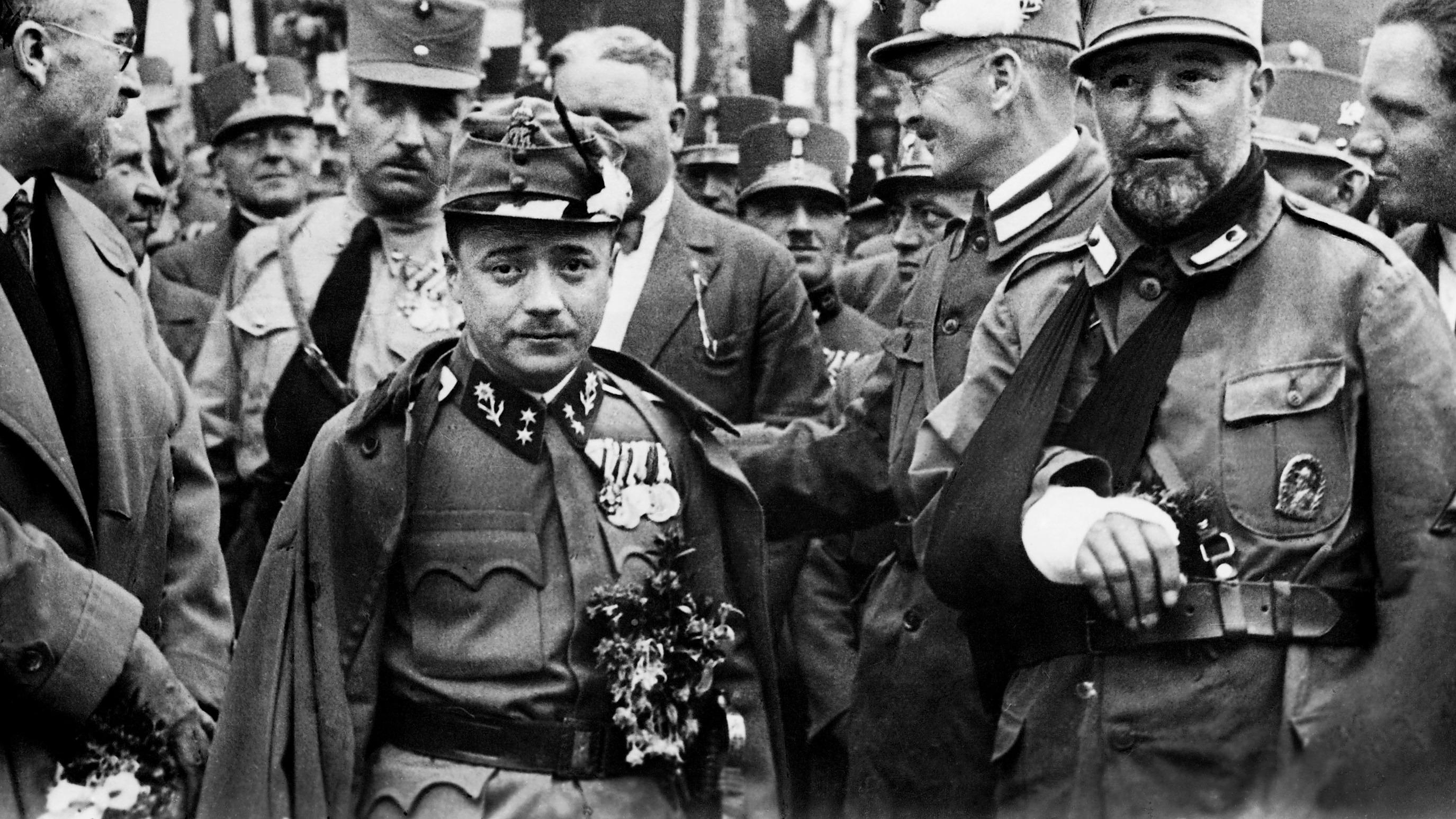A controversial regional museum to the glory of Austrian dictator Engelbert Dollfuss has been discreetly dismantled in the face of criticism, a new affair in a country which is still struggling to confront its history in the 20th century. “The museum has closed definitively,” the mayor of the village of Texingtal (northern Austria) told AFP this week, where the small exhibition opened in 1998 in the birthplace of the Christian Social Chancellor, in power between 1932 and 1934.
The conservative ÖVP party has long considered that this leader protected Austria from Nazism following Adolf Hitler's rise to power in Germany. He was also assassinated in 1934 during an attempted Nazi coup. But he also dissolved Parliament, establishing an authoritarian regime, massively repressing workers' movement activists and banning the socialist party.
Also read: Anschluss commemorations divide Austria
Criticism of the museum showing some 200 pieces - a uniform, photos, etc. - became stronger in 2021, during the appointment to the Ministry of the Interior of the first councilor of this rural commune, the curator Gerhard Karner.
In the process, a commission of historians recommended the gradual dismantling of the museum, accompanied by work on memory. Dissatisfied, the heirs and other donors then demanded that exhibits be immediately removed and returned to the region, a conservative stronghold. “We respected their wishes,” explained Mayor Günther Pfeiffer, which led to the closure. But Alexander Hauer, who heads the group of historians, said he was “surprised” by the speed of the closure. The specialists wanted a “constructive and critical on-site” dismantling of this museum, which had all the makings of a “memorial”. “Dollfuss was honored” for decades despite his dark legacy, he reminded AFP. Chancellor Kurt Schuschnigg succeeded him before the Anschluss (annexation by Nazi Germany) in 1938. “This period from 1933 to 1938 was totally neglected,” he laments, while the thousands of victims were rehabilitated only in 2012.
There is still no consensus between historians and the political class on how to think about these years and how to name this sequence. A portrait of Engelbert Dollfuss even adorned the premises of the conservative parliamentary club until 2017. Unlike the FRG after the war, Austria also evaded its responsibility for Nazi crimes.
The turning point only came at the end of the 1980s with the international debate on the Nazi past of Kurt Waldheim, former secretary general of the UN and Austrian president from 1986 to 1992. It was only then that she looked at the authoritarian period preceding Nazism.

 B:SM will break its investment record this year with 62 million euros
B:SM will break its investment record this year with 62 million euros War in Ukraine: when kyiv attacks Russia with inflatable balloons loaded with explosives
War in Ukraine: when kyiv attacks Russia with inflatable balloons loaded with explosives United States: divided on the question of presidential immunity, the Supreme Court offers respite to Trump
United States: divided on the question of presidential immunity, the Supreme Court offers respite to Trump Maurizio Molinari: “the Scurati affair, a European injury”
Maurizio Molinari: “the Scurati affair, a European injury” First three cases of “native” cholera confirmed in Mayotte
First three cases of “native” cholera confirmed in Mayotte Meningitis: compulsory vaccination for babies will be extended in 2025
Meningitis: compulsory vaccination for babies will be extended in 2025 Spain is the country in the European Union with the most overqualified workers for their jobs
Spain is the country in the European Union with the most overqualified workers for their jobs Parvovirus alert, the “fifth disease” of children which has already caused the death of five babies in 2024
Parvovirus alert, the “fifth disease” of children which has already caused the death of five babies in 2024 Inflation rebounds in March in the United States, a few days before the Fed meeting
Inflation rebounds in March in the United States, a few days before the Fed meeting Video games: Blizzard cancels Blizzcon 2024, its annual high mass
Video games: Blizzard cancels Blizzcon 2024, its annual high mass Falling wings of the Moulin Rouge: who will pay for the repairs?
Falling wings of the Moulin Rouge: who will pay for the repairs? “You don’t sell a company like that”: Roland Lescure “annoyed” by the prospect of a sale of Biogaran
“You don’t sell a company like that”: Roland Lescure “annoyed” by the prospect of a sale of Biogaran Exhibition: in Deauville, Zao Wou-Ki, beauty in all things
Exhibition: in Deauville, Zao Wou-Ki, beauty in all things Dak’art, the most important biennial of African art, postponed due to lack of funding
Dak’art, the most important biennial of African art, postponed due to lack of funding In Deadpool and Wolverine, Ryan and Hugh Jackman explore the depths of the Marvel multiverse
In Deadpool and Wolverine, Ryan and Hugh Jackman explore the depths of the Marvel multiverse Tom Cruise returns to Paris for the filming of Mission Impossible 8
Tom Cruise returns to Paris for the filming of Mission Impossible 8 Skoda Kodiaq 2024: a 'beast' plug-in hybrid SUV
Skoda Kodiaq 2024: a 'beast' plug-in hybrid SUV Tesla launches a new Model Y with 600 km of autonomy at a "more accessible price"
Tesla launches a new Model Y with 600 km of autonomy at a "more accessible price" The 10 best-selling cars in March 2024 in Spain: sales fall due to Easter
The 10 best-selling cars in March 2024 in Spain: sales fall due to Easter A private jet company buys more than 100 flying cars
A private jet company buys more than 100 flying cars This is how housing prices have changed in Spain in the last decade
This is how housing prices have changed in Spain in the last decade The home mortgage firm drops 10% in January and interest soars to 3.46%
The home mortgage firm drops 10% in January and interest soars to 3.46% The jewel of the Rocío de Nagüeles urbanization: a dream villa in Marbella
The jewel of the Rocío de Nagüeles urbanization: a dream villa in Marbella Rental prices grow by 7.3% in February: where does it go up and where does it go down?
Rental prices grow by 7.3% in February: where does it go up and where does it go down? Even on a mission for NATO, the Charles-de-Gaulle remains under French control, Lecornu responds to Mélenchon
Even on a mission for NATO, the Charles-de-Gaulle remains under French control, Lecornu responds to Mélenchon “Deadly Europe”, “economic decline”, immigration… What to remember from Emmanuel Macron’s speech at the Sorbonne
“Deadly Europe”, “economic decline”, immigration… What to remember from Emmanuel Macron’s speech at the Sorbonne Sale of Biogaran: The Republicans write to Emmanuel Macron
Sale of Biogaran: The Republicans write to Emmanuel Macron Europeans: “All those who claim that we don’t need Europe are liars”, criticizes Bayrou
Europeans: “All those who claim that we don’t need Europe are liars”, criticizes Bayrou These French cities that will boycott the World Cup in Qatar
These French cities that will boycott the World Cup in Qatar Euroleague: at the end of the suspense, Monaco equalizes against Fenerbahçe
Euroleague: at the end of the suspense, Monaco equalizes against Fenerbahçe Women's Six Nations: Where to see and five things to know about France-England
Women's Six Nations: Where to see and five things to know about France-England Liverpool: it is confirmed, Slot will succeed Klopp on the Reds bench
Liverpool: it is confirmed, Slot will succeed Klopp on the Reds bench Ligue 1: Montpellier and Nantes back to back, two reds in stoppage time
Ligue 1: Montpellier and Nantes back to back, two reds in stoppage time


















